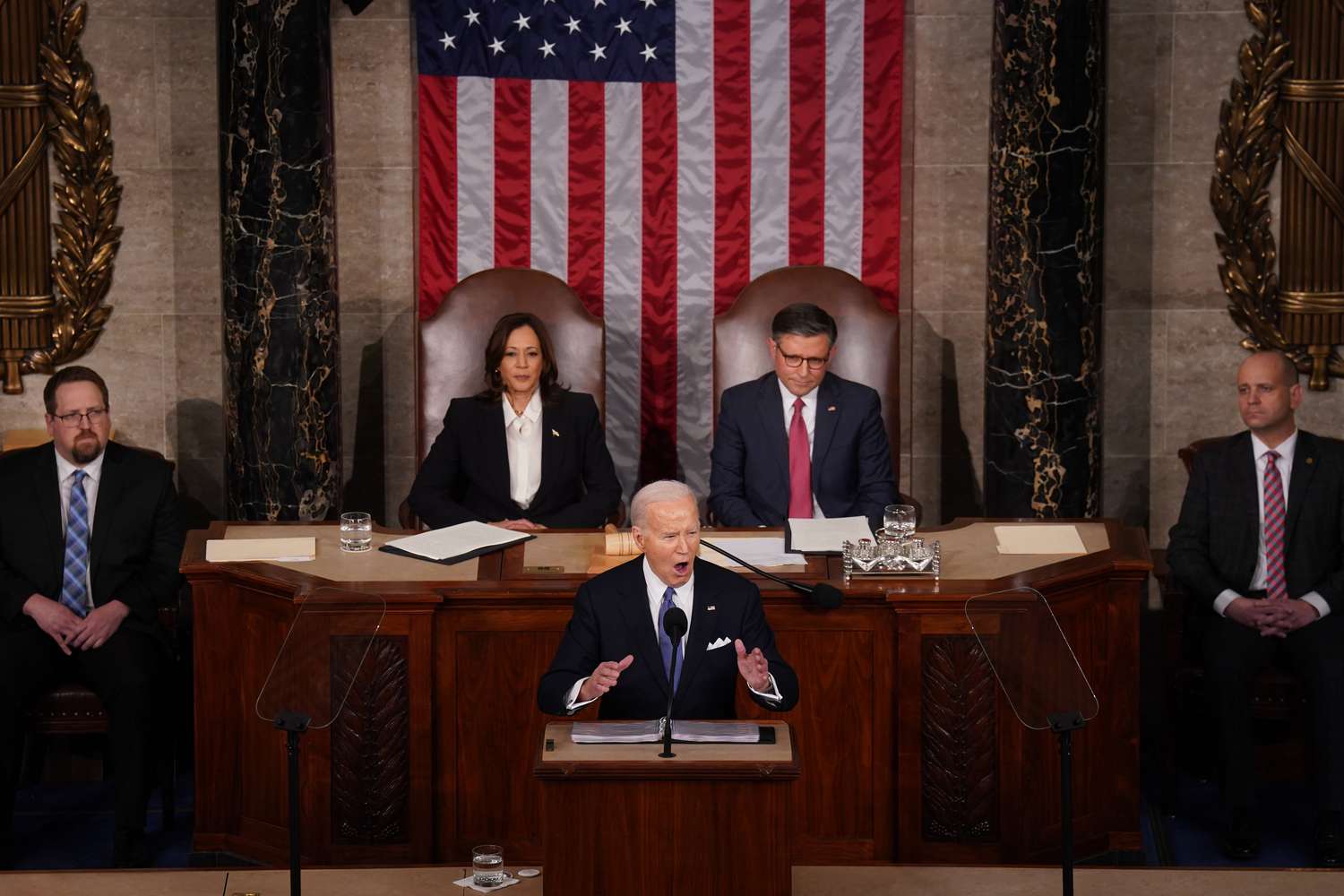Bad marketing advice can make or break a brand. If marketers sidestep well-meaning but counterproductive suggestions, they are in a better position to capture consumer interest.

What would happen if they took this marketing advice to heart? Spoiler alert: It's not great.
![Download Now: Free State of Marketing Report [Updated for 2023]](https://dailyhindnews.com/wp-content/uploads/2024/01/1705025896_692_Bad-Marketing-Advice-in-Action-and-What-We-Can-Learn.png)
Here are 11 examples of bad marketing advice – and what we can learn from these customer-facing failures.
11 examples of marketing advice gone wrong
Read on for our list of 11 bad marketing moments, or use the jump link to find your favorite example.
- kfc calendar clash
- gap logo text
- pepsi protest problem
- burger king tweet trainwreck
- Dove Double-Take
- bing brand debacle
- The Huggies Hard Sell
- ea criminal mayhem
- kenneth cole cairo accident
- Heineken Beer Breakdown
- audi audacity
1. KFC Calendar Clash
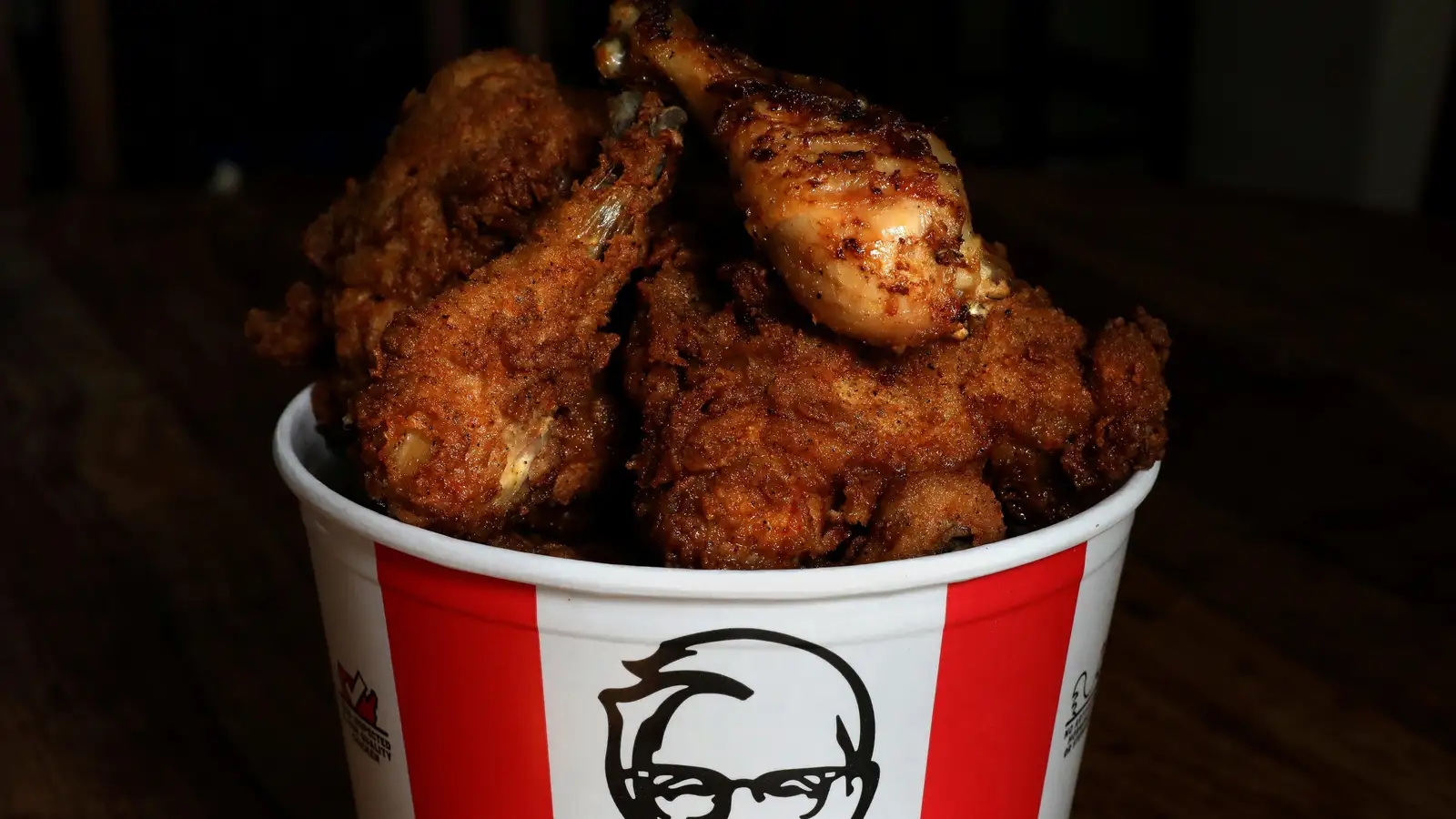
On November 9, 2022, KFC sent a mobile notification to its app users, encouraging them to “treat yourself” to some great fried chicken and celebrate Kristallnacht.
Problem? This is no funny German holiday – it is known as the Night of Broken Glass and is associated with a wave of Nazi attacks against the Jewish German population.
Oops.
For KFC, the problem arose from semi-automated content creation. Simply put, a content creation bot saw that Kristallnacht was listed in the German calendar and assumed it was important. It was – just not for the right reasons.
What can we learn:
Here bad advice is taking a person off the path. This problem could have been prevented with a quick glance from employees, but instead KFC lost sales. best bet? If someone asks you to end a human relationship, don't take it to heart.
2. Gap Logo Text
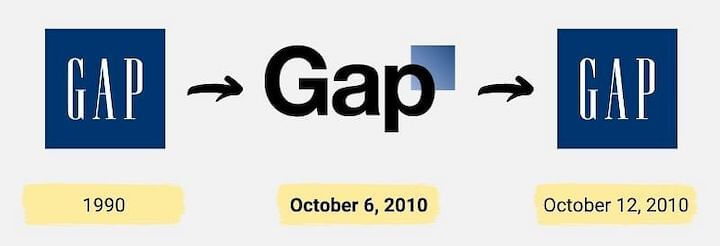
From 1990 to 2010, Gap used the same familiar logo: its name in white letters on a blue background. Sure, it wasn't the most exciting logo, but it was simple, easy to recognize, and generally well-liked.
However, on October 6, 2010, Gap released a new logo: with their name in a different font, in black, and with a small blue square in the upper-right corner.
Customer reaction was immediate and brutal. While Gap tried to salvage the situation by treating customer complaints as a crowd-sourcing exercise, the original logo was returned by October 12, 2010.
What can we learn:
Although there is nothing wrong with change, there is no reason to fix what isn't broken. If your logo or name or website is performing well, leave it alone – at least until you get solid feedback from customers.
3. Pepsi protest problem
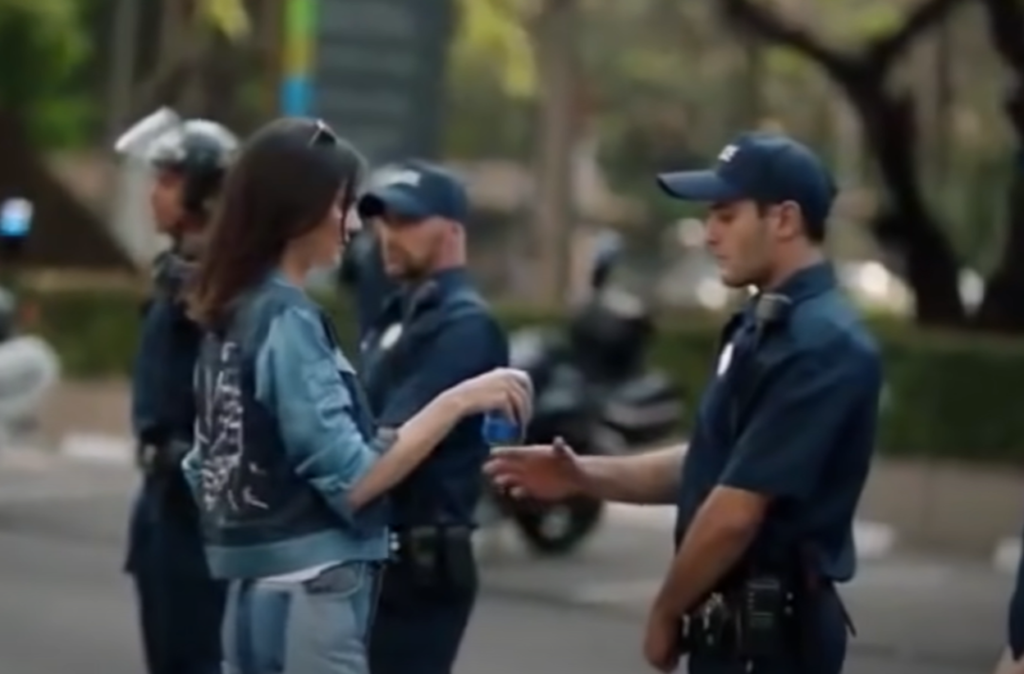
image Source
Pepsi has always struggled to match the market reach of its arch rival Coca-Cola.
While the 2017 ad featuring Kendall Jenner brought much-needed attention to the brand, Pepsi executives probably would have preferred if everyone had forgotten about the ad.
Why? Because it featured Kendall Jenner smiling during an anonymous protest. Jenner walks to the front of the protest line, walks up to a police officer and hands him a Pepsi. He takes it, and the crowd cheers.
To put it bluntly, it was a terrible look for the brand. With protests rising across the United States as social tensions rise, the ad seems dismissive and nonsensical of the reality that often comes with protests.
Martin Luther King's daughter tweeted about the ad, making it clear that Pepsi missed the mark.
What can we learn:
While real-life events can be a great catalyst for marketing efforts, brands need to consider whether their product makes sense in the context.
Are protesters happily drinking Pepsi at events? not likely. Does Pepsi have anything to do with civil unrest? No. For brands, it's often better to stay in their lane than try to emphasize social justice.
4. Burger King Tweet Trainwreck
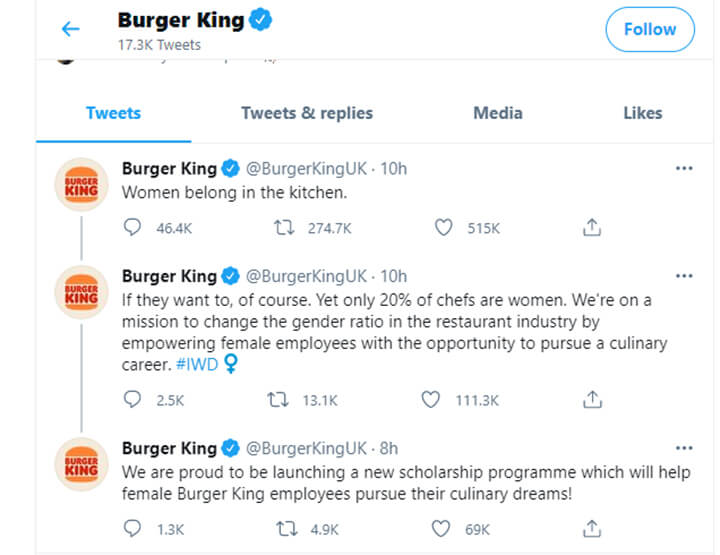
On International Women's Day in 2021, Burger King UK sent out a great tweet:
“The women are in the kitchen.”
Two more tweets followed soon after, making it clear that the first was a joke and that the company was actually trying to reduce the gender disparity of chefs in the restaurant industry.
Instead, he increased hostility among his customers. Many people didn't bother to read the tweet at first, and those who did weren't at all surprised by BK's attempt at “humor.”
The result was a tarnished brand image that made them appear indifferent at best and misogynistic at worst.
What can we learn:
It's simple: If you're going to make a joke, make sure it's funny. If that's not the case, at least make sure you're not punching down. Make fun of your own brand or a company with more influence. Don't go after women on Women's Day.
5. Dove Double-Take
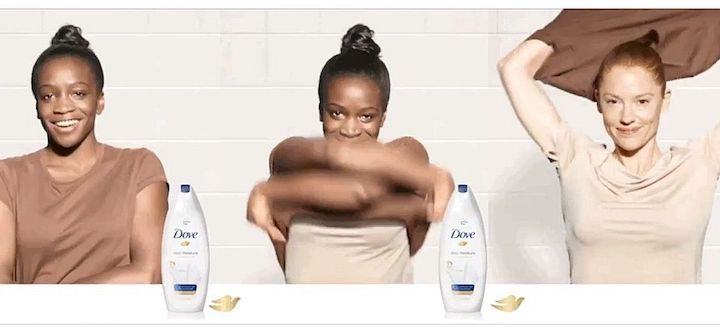
image Source
Dove aimed to highlight diversity with its advertising. The concept was simple: women of different races used Dove body wash and then took off their shirts. Underneath each shirt was another shirt, and a woman of a different ethnicity.
Problem? The final change featured a black woman using Dove, then taking off her brown shirt to reveal a white woman. The implication that being “clean” turned black into white did not sit well with audiences.
What can we learn:
Good intentions do not always yield good results. While the black actress in the ad defended the spot, and it's clear that Dove wasn't trying to say that white = clean, the context of the ad made that interpretation entirely possible.
It's better to get real-world feedback than to spend weeks apologizing for unintended racism and finding out it's back on the drawboard.
6. Bing brand debacle
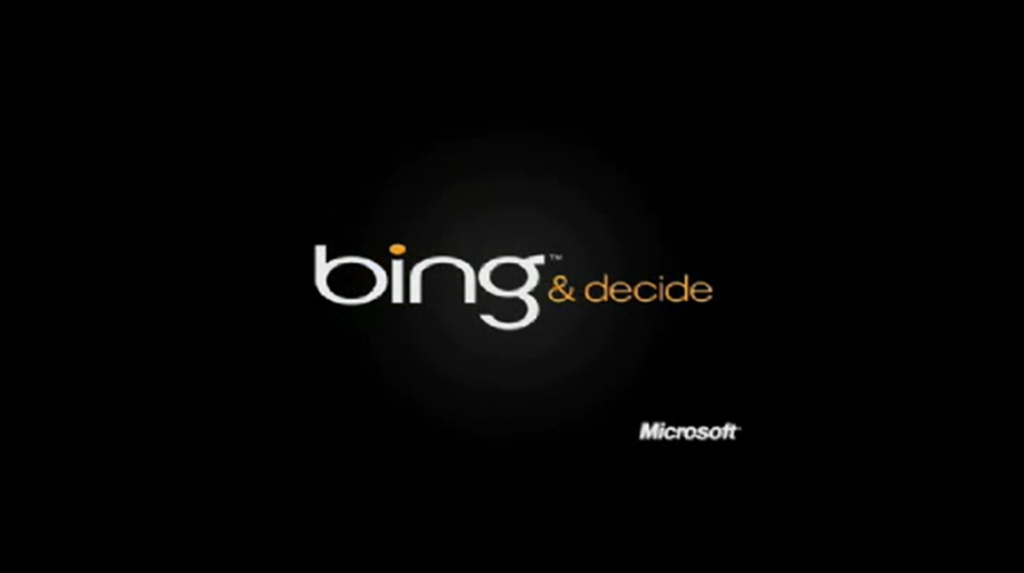
Microsoft's service has the second largest market share among search engines. But don't get too excited – in practice, Bing gets 3% while Google gets 92.5%.
The numbers make it abundantly clear why Bing wanted to reinvent itself and take on Google.
However, the 2010 plan was flawed from the beginning – for some reason, Microsoft decided the best approach would be to turn Bing into a verb like Google.
But the thing is: no one will say “Just binge that”, “or I just binge that.” First, this has already been done by Google, and second, saying Bing out loud sounds ridiculous. Not surprisingly, the campaign went nowhere.
What can we learn:
If someone advises you to copy what another brand is doing, get a second opinion. While many brands have similar marketing strategies, advertising look-alikes rarely work well.
7. The Huggies Hard Sell
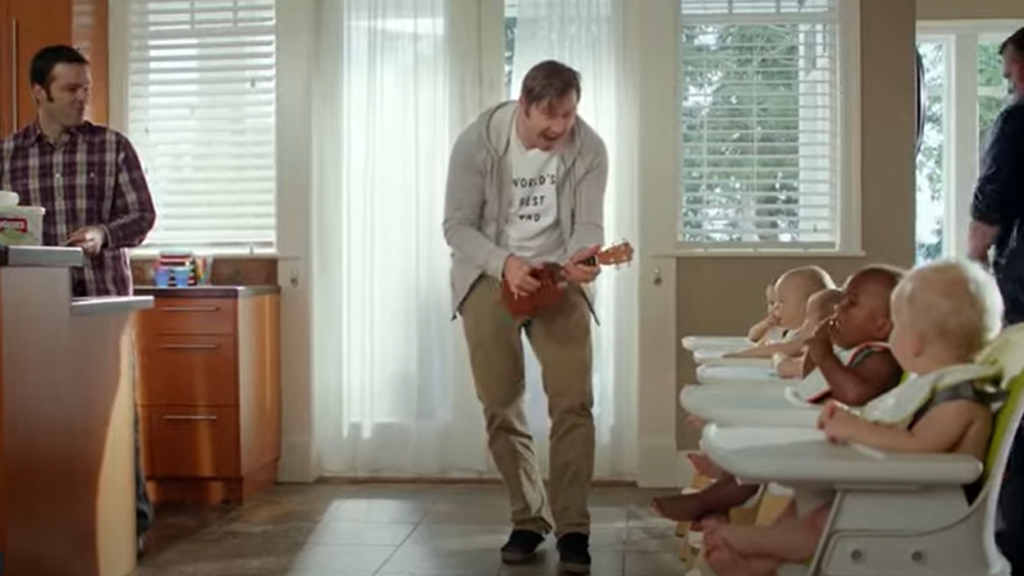
image Source
Dad is a fool, isn't he? That's the idea behind a 2012 Huggies ad, in which fathers were tasked with supporting — and even caring for — children. Gasp! , Changing their diapers, all without their wives.
Not surprisingly, the advertisement spread like a lead balloon. Both single parents and same-sex couples expressed their disappointment, and fathers in general felt it missed the mark.
For most of these men, parenting was an equal-opportunity job, not something they did only when they had no choice.
What can we learn:
Light-hearted ads are a great way to connect with customers if they stay away from stereotypes.
It was just as easily possible to send messages to Huggies, showing that children of all shapes and sizes produce large amounts of trash for their parents to clean up, shall we say, and how Huggies competed. Performed better in.
8. EA Criminal Disaster

In 2009, Electronic Arts was preparing to release its Godfather II video game. To help promote the game, they sent advance copies to media outlets. There's nothing strange about it, right?
Of course, except for the fact that EA included an actual set of brass knuckles with every advance copy. Not only is this a terrible idea from a marketing standpoint, but it's also illegal in many states.
The company soon realized its mistake and asked for the knuckles back – while the misstep generated some buzz, the game still ended up as a commercial failure.
What can we learn:
Unexpected marketing tactics can be a great way to grab customers' attention, but you have to think about them. If at any time someone suggests something that may be illegal or even in a legally gray area, seek permission.
9. Kenneth Cole Cairo Conflict
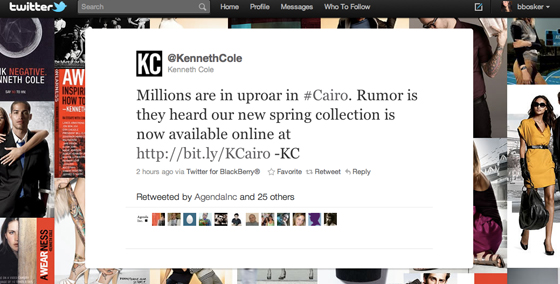
Clothing brand Kenneth Cole made a very strange marketing choice to link the political unrest in Cairo with the launch of its new spring collection. Needless to say, it didn't go well.
In 2011, the brand tweeted that millions of people were rioting in Cairo, then suggested that the reason was that the brand had launched its new spring collection.
The tweet not only makes no sense, but is also extremely insensitive, considering that over 800 people were killed during the protests.
What can we learn:
Well-timed ads can have a massive impact – consider the “You can still drown in the dark” ad Oreo ran when the power went out at Super Bowl XLVII. The difference? The Super Bowl is a sporting event. The Cairo protests were a civil rebellion.
10. Heineken Beer Breakdown
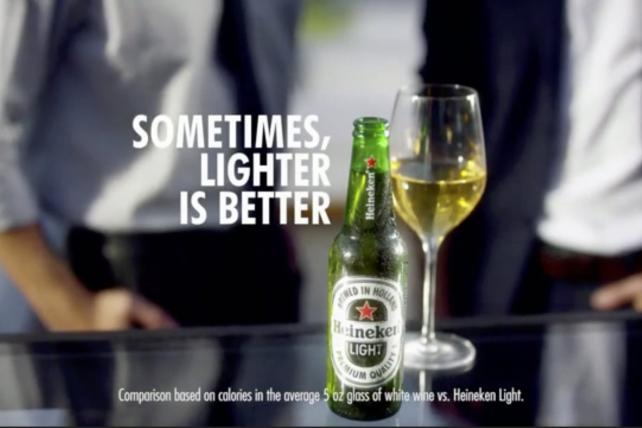
Light beer has gained popularity as counting carbs has become more common. Beer brand Heineken wanted to capitalize on the moment with a simple slogan: “Sometimes lighter is better.”
At first glance there's nothing really wrong here. It's not a great tagline, but it's not a bad one either. Problem? This could also be considered a bit racist.
If Heineklein had thought about this they could have avoided any problems, but instead they created an ad in which a light beer falls down the bar and into the hands of dark-skinned patrons before ending up with a blonde woman. Passes through.
Chance the Rapper's tweet drew attention to the mistake and Heineken was forced to apologize.
What can we learn:
First, it's worth investing in a diverse marketing team – you never know what you might miss. Second, don't rush into it. Set marketing ideas aside for a few days or a week and come back with a fresh set of eyes. It's better to catch a mistake than to drag out the entire advertising campaign.
11. Audi Audacity

image Source
While Audi has made a solid name for itself in Germany and the U.S., its efforts to sell used cars in China, however, were soon derailed.
This ad took place at a wedding, in which the groom's mother was examining the bride as if she were a used car – aggressively inspecting every aspect of the woman's appearance before deciding she was good enough. Was getting it done.
Audi's tagline, “An important decision must be taken carefully” draws parallels between cars and women – parallels that make women seem like property that must be inspected before purchasing. Doesn't look that good.
What can we learn:
It's not always easy to tell what's funny and what's not. However, when in doubt, there is a simple solution: ask the group you are targeting. Bring them in, let them see your ad and ask what they think. If they like it, great. If not, change course.
Learn from these marketing failures
Bad advertising advice is out there, and chances are you've heard it all at least once.
However, in some cases, bad advice is coming from inside the house – from unconscious bias to “funny” jokes that aren't so funny on second or third thought, there are plenty of ways for companies to miss the mark.
best bet? Learn from the failures above.
Choose to be inclusive and caring rather than malicious or sarcastic. And if something goes wrong, admit it. Don't be vague about your intentions; Instead, offer a sincere apology that acknowledges what you did and what you will do to make it right.



